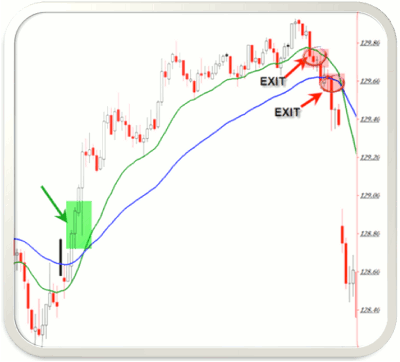Some insights stand the test of time, says Corey Rosenbloom of AfraidtoTrade.com, as evidenced by technical analysis pioneer Richard Wyckoff, whose four specific reasons to exit a trade are equally fitting in today's markets.
With all the literature out there, it's easy to find trade set-ups and entry strategies, but the real money is often made with proper exit logic/strategies.
What did classical thinker Richard Wyckoff say about closing a trading position? In his book Studies in Tape Reading, Wyckoff identifies four specific reasons to close a trade:
"A Tape Reader must close a trade.
- When the tape tells him to close
- When his stop-loss is caught
- When his position is not clear
- When he has a large or satisfactory profit."
There's a reason Wyckoff lists "When the tape/price tells him so" as the first point:
"The first and most important reason for closing a trade is that the tape/price says so.
Within the ribbon of sales recorded in the tape, there runs a fine silken thread of the trend. It is clearly distinguishable to one sufficiently versed in the art of tape reading.
When one is short [a stock] and this thread suddenly indicates that the market has turned upward, it is folly to remain short.
One must have the flexibility of whale bone and entertain no rigid [bullish or bearish] opinion. He must obey the tape implicitly."
In other words, watch price action (strength, weakness, divergences, impulses) and be on guard for any sudden/unexpected developments while you're in the trade that directly contradict the reason you entered a trade.
The same goes for #3, "When the position becomes unclear," or when price did not behave as expected once you put on the trade. Perhaps you expected a sudden upward impulse, but instead, price stagnated. Wyckoff would suggest an exit.
Exiting on a stop-loss is often a necessary precaution to prevent a small loss from becoming a large one if we continue fighting the price action as it moves against us.
The final point is slightly more controversial in today's market, as logic would state to continue holding a position that is producing nice profits, but that's another story we must all address in our own trading plans.
Many traders make an adjustment to this point by selling, perhaps, one half of their position to take some money off the table and let the remaining half continue to earn a profit.
For Wyckoff, the trade entry started with the tape (price) and ended with the tape (price). That's helpful wisdom from yesterday's markets that still apply to today's volatile markets.
Knowing when to take your profit or loss is just as important as knowing when to enter a trade; perhaps even more important.
By Corey Rosenbloom, Trader and Blogger, AfraidToTrade.com
















